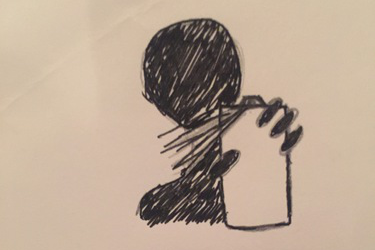Graffiti in our society is perceived as a sin against the law, possibly putting the artist in deep trouble. But is reverse graffiti a different story? As you drive along the highway and back alleyways of neighborhoods, spray painted jumbles bubble letters are sprawled across walls. However, reverse graffiti is a form of art that is more unique: a temporary work that is created by cleaning dirt from any surface. In other words, it is the very opposite of the graffiti with which we are all familiar since reverse graffiti involves removing layers, rather than superimposing them.
A reverse graffiti artist has one enemy: the elements. Rain, pollution, or decay wash away these masterpieces of reverse graffiti. This is an art that finds its way into our culture through removing dust and dirt rather than the addition of spray paint. Reverse graffiti alters our opinion of vandalism. Like any form of graffiti, some find it imaginative and fascinating while traditionalists strain to perceive art as something that strikes them as criminal and destructive. However, reverse graffiti may be viewed in a more benign light, stressing environmental motives and juxtaposing the harsh nature of dust-covered urban environments.
This temporary form of art is now featured in advertising, where the easy, non-destructive form of graffiti seems like the perfect way to convey a message. Businesses from small store fronts to large corporations can utilize this art to publicize their products in an environmentally friendly way. With a low cost and high impact outcome, companies in the UK and Scotland, especially, are finding an outlet for publication.
In another sense, murals of reverse graffiti are created with a little elbow grease, or more accurately, with a power washer. These techniques have been used by artists such as William Kentridge, as South American who created a 1,800 foot mural called “Triumphs and Laments” that is being brought to Rome. Kentridge and his team removed dirt from the surface to create what is deemed to be the largest public contemporary art project in all of Rome. This masterpiece outlines the limits to which reverse graffiti can exist. The work reveals a silhouette outline that is embellished near the banks the Tiber River. This public display is almost a battle cry for attention. Reverse graffiti is becoming a larger force in the art world as it takes over large spaces and is a captivating way for artists to express themselves.
Within the world of reverse graffiti which is environmentally friendly, imaginative, and available to the masses, what is there to oppose? Many businesses are facing prosecutions for failing to get permission for their advertisements on street sidewalks and other public areas. On streets, a permit for reverse graffiti is as necessary as it is for spray painted, destructive graffiti. But when created in a lawful manner, reverse graffiti can benefit companies and provide for a temporary, artistic platform.
In the art world, reverse graffiti is taking large steps and will hopefully continue to in the future. It just shows how far a couple bottles of cleaning supplies and a power washer will go; the small and commonplace tools can sometimes make a masterpiece.
Talia Rosen
staff writer
Graphics: Justine Umali

